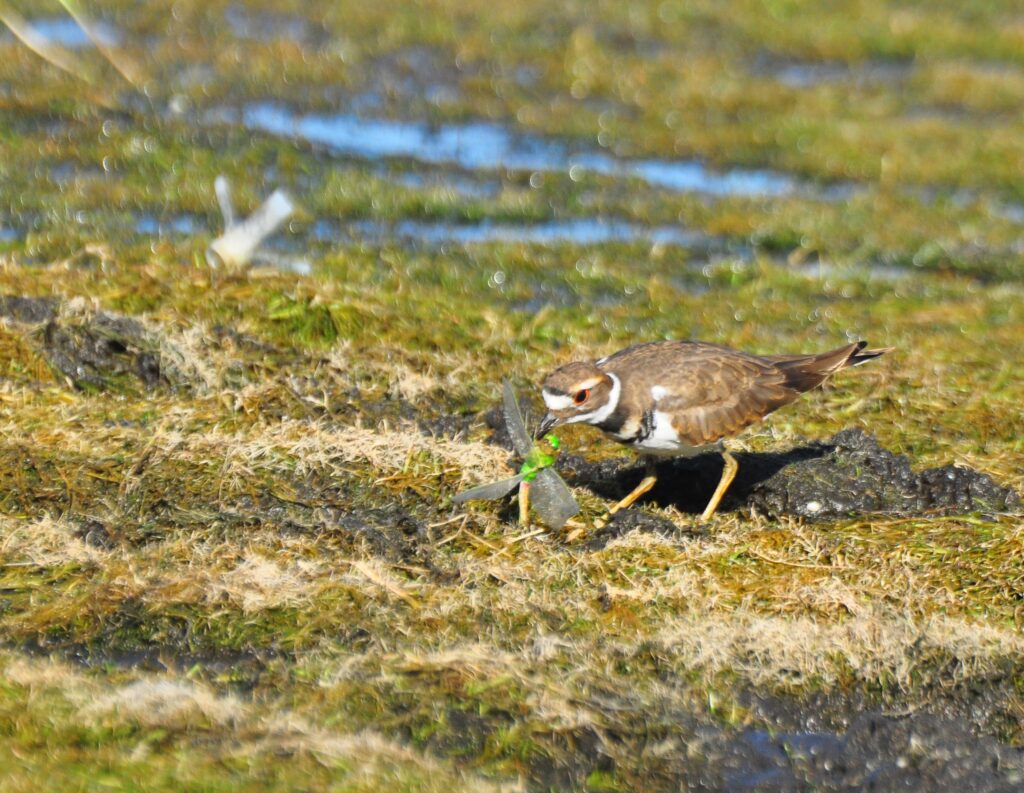Photography courtesy of Lowell Washburn, all rights reserved.
Following months of searing summer drought, water is at a premium across much of Iowa. Resident wildlife – especially those species depending on wetlands – face a daily array of new challenges and new dangers. As wildlife continues to adjust to their ever-changing habitats, human observers may have the surprise opportunity to view some unique displays of triumph and tragedy.
My latest example occurred during a recent duck hunt. Sitting in the cattails on one of my favorite public wetlands, the conditions weren’t pretty. Water that normally filled the basin was reduced to a puddle. The water level had become so compromised, in fact, that it currently lacked enough depth to adequately float my decoys. Although the scenario was far from ideal, I was pleasantly surprised when, at the first hint of daylight, small flocks of ducks began dropping into the spread. The fowl were still arriving at shooting time, and I was able to bag five birds from the initial flurry – bringing me to within one duck of the daily limit. But once the sun popped above the horizon, the flight ended abruptly.
As it turned out, that sixth duck never showed. But as morning temperatures rose, I was treated to an event just as interesting and certainly more unusual than the arrival of a single duck. The drama began when a number of dragonfly nymphs suddenly began crawling from the shallow water and onto my decoys. In an amazingly short time, the drying nymphs split their skins down the back allowing a crop of beautiful new dragonflies to emerge.
I was separated from my decoys by a fifteen-yard-wide mud flat. During normal years, the nymphs would have climbed onto emergent cattail stalks — instead of my decoys — to conduct their transformation. But due to this year’s drought, the cattails were high and dry. My decoys provided the only available means to climb from the water. In more than sixty years of waterfowling, I had never once had a single dragonfly use a duck decoy as a fledging platform.

It didn’t take long to realize that there were many more nymphs than there were decoys. Consequently, wholesale numbers of the insects soon began emerging from the water’s edge to climb anything sticking out of the mud. Once the exodus began, it didn’t take long for the desperate nymphs to attract the attention of a recently landed flock of killdeer.
Suspicious at first, the killdeer soon realized that this was food! The table was set, and the shorebirds lost no time cashing in on the bonanza. By now, some of the recently emerged [adult form] dragonflies were almost ready to take to the air. Another couple of minutes and they probably would have. But just as soon as the dragons would begin flexing their wings, one of the killdeer would rush in to seize the prize, subduing and swallowing the huge insect in two or three big gulps. The slowly moving nymphs were even more vulnerable to the killdeers’ predations. Although the ongoing carnage was impressive, the hungry killdeer simply couldn’t keep up, and surviving dragonflies were soon lifting into the relative safety of the autumn skies.

I don’t know how many of you have watched killdeer – or any other bird species – wreak havoc on emerging dragonflies. For me, it was a first – the result of a highly unusual set of habitat conditions that worked to the benefit of the killdeer but to the detriment of the dragonflies.

One of the things I love about waterfowl hunting is that no matter how long you’re at it, you never see it all. There is always something new.

 Susan Judkins Josten
Susan Judkins Josten Rudi Roeslein
Rudi Roeslein Elyssa McFarland
Elyssa McFarland Mark Langgin
Mark Langgin Adam Janke
Adam Janke Joe Henry
Joe Henry Sue Wilkinson
Sue Wilkinson Tom Cope
Tom Cope Kristin Ashenbrenner
Kristin Ashenbrenner Joe Wilkinson
Joe Wilkinson Dr. Tammy Mildenstein
Dr. Tammy Mildenstein Sean McMahon
Sean McMahon